QuestionHello, I have a few small questions regarding pot bellied pigs and i cannot seem to find consistant information, or the right information for me anywhere else on the web! I work as a CSA crop farmer with a large variety of fruit, vegitables, and a small amount of livestock. My passion on the farm is my "pet" animals. I have three dogs in the house already, and no room for any more animals in there! But my barn is a cozy home to two nigerian pygmy goats, two babydoll sheep, dwarf chickens, and two lop earred rabbits all year round. I recently started looking into adding a pot bellied pig. My number one question is can a pig take being outside in the barn all year, what is the lowest/highest temperatures they can be comfortable in? During the summer they could have the run of the barnyard, but can they co-exist with the other animals? Some say yes, some no. The animals i do have are part of a summer petting farm that is open to the local community when they visit the rest of the farm. Could a pot bellied pig adjust comfortably to this type of life style or are they a one person type of animal? Any information you could give me related to this would be great. I absolutely do not want to commit to an animal that will not be happy with what i am able to offer him! I work hard, even with my temporary livestock, to make sure that their lives are as happy and enjoyable as possible in my care. Any new animals i aquire deserve the same attention and love! Thank you for your time!
AnswerThere's a lot of conflicting information about pot-bellied pigs because each pig is unique. Making blanket statements about them is sort of like making blanket statements about people. Some will fit the profile. Some will not.
Pigs can tolerate surprisingly cold temperatures as long as their shelter is DRY and WINDPROOF and they have plenty of DRY BEDDING. Pigs live comfortably in barns in Canada where temperatures are below 0 F for days on end. They will need fresh water (not frozen ice or snow).
Pigs tolerate warm conditions easier than cold ones, as their native environment in SE Asia is naturally warm and humid. In a hot climate they need shade and lots of water or mud, because they can not sweat to cool themselves.
Either way, acclimation is the key element. Florida pigs brought North in cool months need to be kept warm until summer. The next winter they will be just fine (and might even enjoy the snow!). Pigs from cool Northern areas brought South in hot months need to be kept cool and out of the hot sun until the cooler months, with air conditioning, a swamp cooler, a big fan, cool mud, or a big block of ice and plenty of shade.
Most pigs adapt very well to other animals, the problem is (usually) the other animal. Each species of animal communicates in it's own way, and the signals often get mixed between species. Dogs, for example, are natural predators, and pigs are naturally prey. A pigs natural behaviors can trigger attack behavior in some dogs. This is NOT the dogs fault! But when this happens the dog usually wins. Goats might butt pigs, but as long as the pig has other companion animals and a place to get away from the goats, they'll be fine. Horses can be dangerous for pigs, because pigs can startle horses, or try to steal food. A kick or stomp from a horse can seriously injure a pig.
Keeping the pigs separate at feeding time and providing them with a safe, private "personal space" they can retreat to prevents most problems.
Some pigs do bond with just one person. Only house pigs can get very territorial. This rarely happens with "Barn" pigs or pigs living with other pigs.
My suggestion is to find a rescue near you and adopt adult pigs whose personality (and final size!) is clearly evident. Additionally, these pigs will be acclimated to your climate.
Pigs reach "emotional maturity" at about age 2. A 3 year old pig who lives happily with other pigs or other animals, and is friendly with visitors will most likely continue to be that way throughout his life.
There is a fairly complete list of sanctuaries and rescues here http://www.thepigpreserveassociation.org/sanctuaries.htm
and a database of pigs available for adoption at www.pigplacementnetwork.com
I always recommend trick training because it helps the pig understand the owner, and the owner understand the pig. Priscilla Valentine's book, Pot-bellied Pig Behavior and Training (available from Amazon or http://www.valentinesperformingpigs.com/index.html and from some sanctuaries) is the best pig training book I've seen.

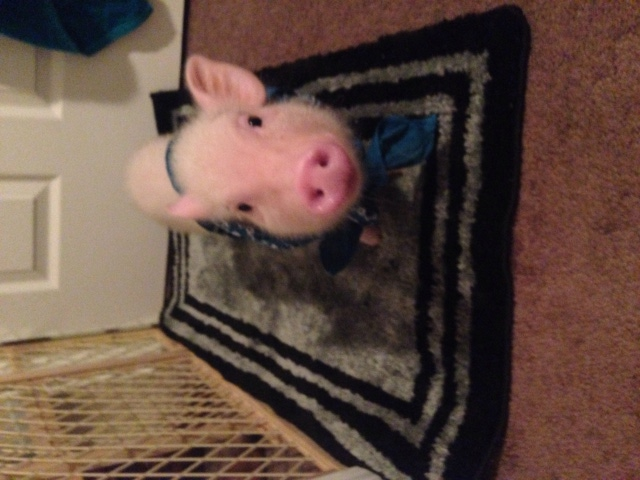 Mini Potbellied Pig Shaking and Peeing while Drinking
Question
Bentley
Hi,
I have a 7 month old mini
Mini Potbellied Pig Shaking and Peeing while Drinking
Question
Bentley
Hi,
I have a 7 month old mini
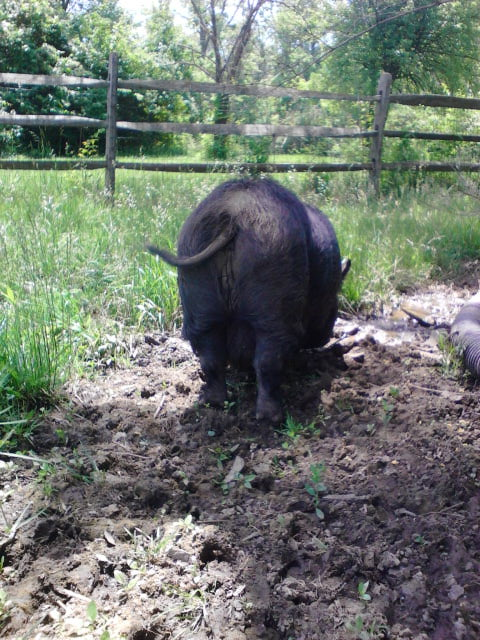 2 pot belly pigs male/female? abandoned & need a home
Question
mama? both pigs
Hello, thank you
2 pot belly pigs male/female? abandoned & need a home
Question
mama? both pigs
Hello, thank you
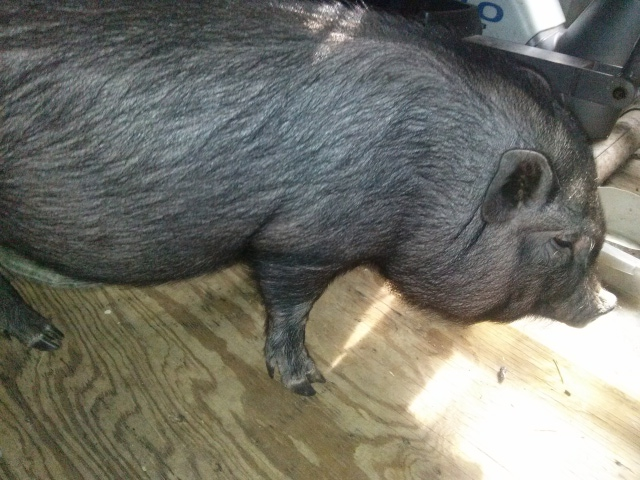 mini potbelly feeding
Question
cherish cherish n sasha
I have a
mini potbelly feeding
Question
cherish cherish n sasha
I have a
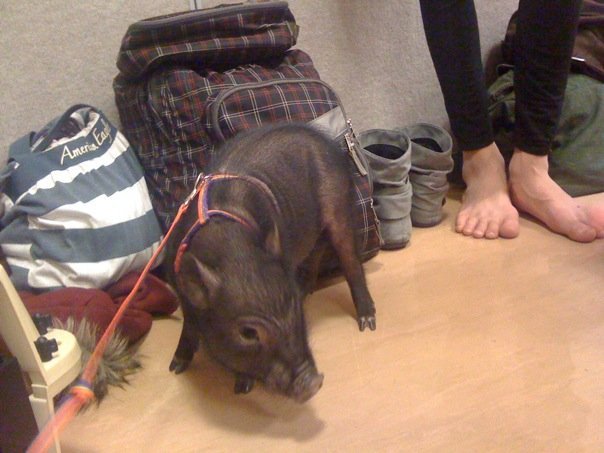 getting my PBP neutered
Question
Fred Astaire
My mini PBP is 4months old, latel
getting my PBP neutered
Question
Fred Astaire
My mini PBP is 4months old, latel
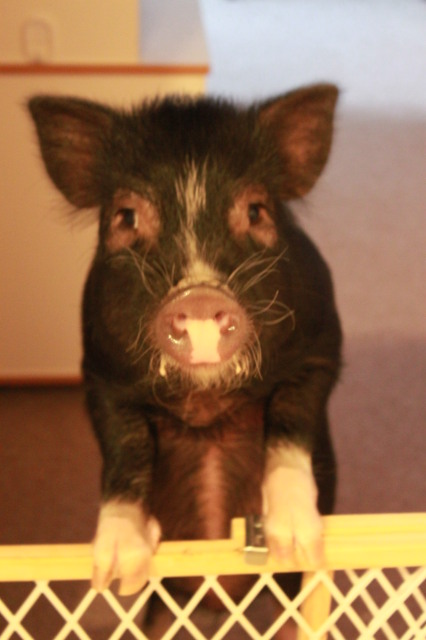 Mischievous piggy
Question
Hoover
I am the proud owner of a 9 month old n
Mischievous piggy
Question
Hoover
I am the proud owner of a 9 month old n